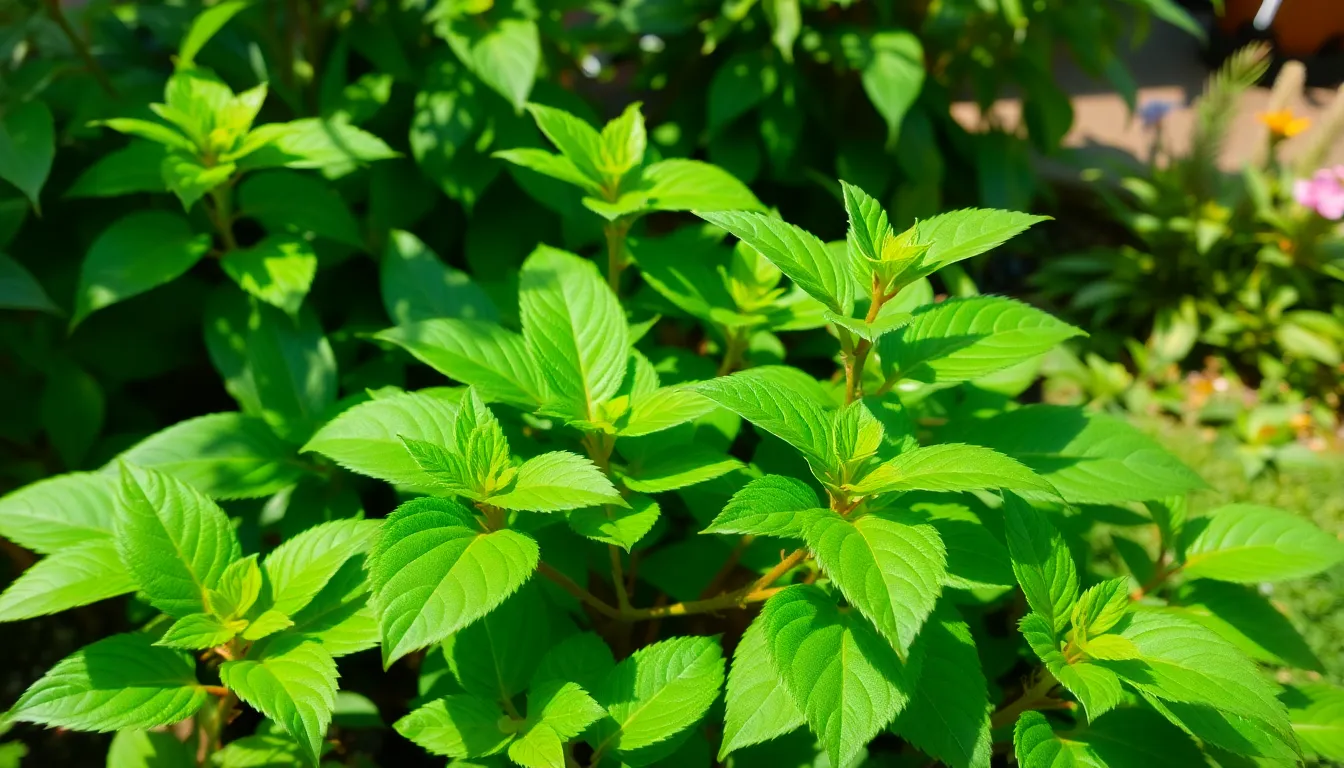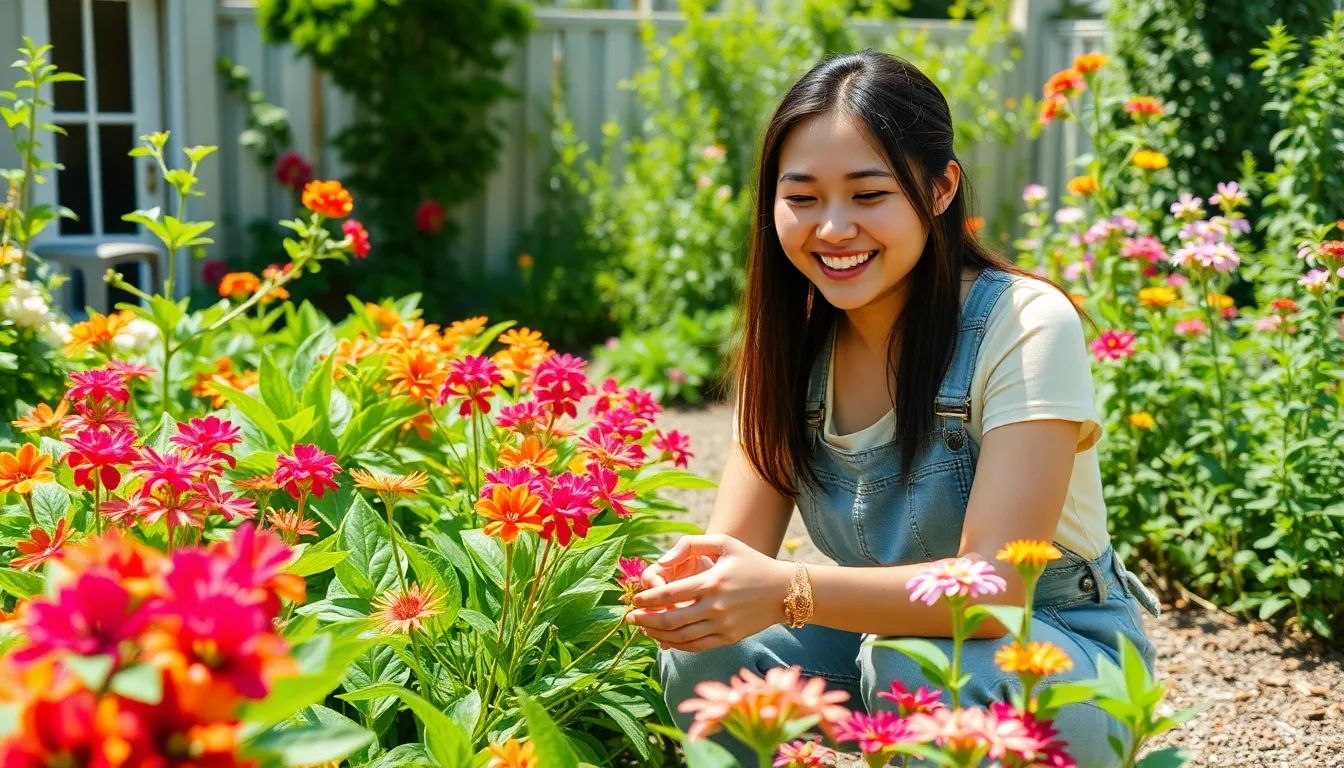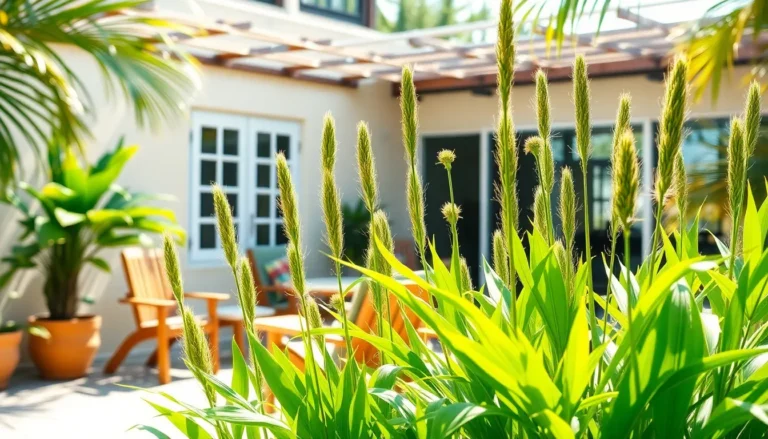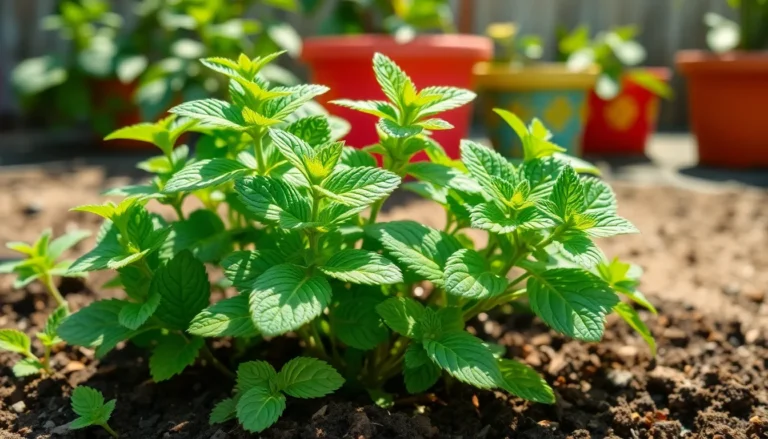If there’s one plant that deserves a round of applause, it’s the mosquito plant. Not only does it add a splash of green to any space, but it also boasts the impressive ability to keep those pesky mosquitoes at bay. Who wouldn’t want a natural bodyguard right in their garden?
Understanding Mosquito Plants
Mosquito plants serve as excellent companions in outdoor spaces. They not only enhance the garden’s aesthetics but also play a significant role in pest control.
What Are Mosquito Plants?
Mosquito plants, scientifically known as Pelargonium crispum, are varieties of geraniums. They release citronella oil, which is well-known for its ability to repel mosquitoes. These plants thrive in full sunlight and prefer well-drained soil. Commonly found in pots or gardens, they feature bright green leaves and often bear clusters of colorful flowers.
Benefits of Mosquito Plants
Several benefits come with cultivating mosquito plants. They provide natural mosquito repellent properties, reducing insect bites in outdoor areas. Planting them around patios or near doors helps create a protective barrier against mosquitoes. Additionally, mosquito plants require minimal maintenance, making them suitable for beginner gardeners. Their aromatic leaves add a pleasant scent to spaces, enhancing the overall outdoor experience. Thus, these plants serve both functional and aesthetic purposes.
Essential Care Requirements for Mosquito Plants

Mosquito plants require specific conditions for optimal growth and health. Understanding their needs ensures a thriving plant that effectively repels pests.
Light Conditions
Bright sunlight promotes healthy growth in mosquito plants. They thrive best in full sun, needing at least six hours daily. In shaded areas, growth slows, and the plant may not produce the aromatic oils necessary for mosquito repulsion. For optimal results, place mosquito plants in locations that receive direct light. Recognizing these light preferences leads to vibrant, lush foliage.
Watering Needs
Consistent moisture plays a vital role in maintaining mosquito plants. While they’re drought-tolerant, regular watering encourages robust growth. The soil should remain slightly moist but never waterlogged. Overwatering leads to root rot, a common problem for these plants. Establishing a routine of checking soil moisture can ensure the plants receive adequate hydration. Adjustments can be made based on seasonal changes, keeping the plants thriving year-round.
Soil Type
Well-draining soil is essential for mosquito plants. A mix of potting soil and sand or perlite works best, providing necessary drainage. Nutrient-rich soil enhances growth but should avoid compacting. Testing soil’s drainage capabilities is crucial; water should pass quickly through. This soil structure prevents moisture retention, allowing roots to breathe. Choosing the right soil type creates a strong foundation for healthy, pest-repelling plants.
Pest and Disease Management
Effective pest and disease management is essential for maintaining healthy mosquito plants. Awareness of common pests and disease signs helps in safeguarding these valuable plants.
Common Pests
Aphids, spider mites, and whiteflies rank among the most frequent pests affecting mosquito plants. These insects tend to suck plant sap, resulting in stunted growth and yellowing leaves. Identifying aphids includes noticing a sticky residue or curled leaves. Spider mites create webbing on the undersides of leaves, signaling an infestation. Whiteflies appear as tiny flies that emerge when foliage is disturbed. Regularly inspecting plants enables early detection, allowing for prompt action. Utilizing insecticidal soap or neem oil effectively mitigates their impact.
Signs of Disease
Fungal infections frequently affect mosquito plants, with powdery mildew and root rot being notable examples. Powdery mildew presents as white, powdery spots on leaves, obstructing photosynthesis. Root rot occurs from overwatering, indicated by wilting leaves and a rotten smell from the soil. Additionally, bacterial blight can manifest as dark spots on foliage and stems. Maintaining proper moisture levels and adequate airflow minimizes disease risk. Implementing good cultural practices, such as using sterile soil and ensuring proper spacing, aids in preventing disease.
Propagation Techniques
Propagation of mosquito plants can occur through seeds or cuttings. Each method offers distinct advantages for expanding your collection.
Seed Propagation
Seed propagation works well for those seeking to grow several plants at once. Start by collecting mature seeds from healthy mosquito plants, selecting those that display vibrant foliage and flowers. Use well-draining soil, filling seed trays or pots and lightly covering the seeds with more soil. Water gently to ensure moisture without saturating the mix. Providing warm temperatures and adequate sunlight promotes germination within two to three weeks. Once seedlings develop a few sets of true leaves, transplant them into larger pots or their final garden location.
Cuttings Propagation
Cuttings propagation provides a quicker alternative for expanding mosquito plants. Snip healthy stem cuttings measuring about four to six inches long, making the cut just below a leaf node. Remove the lower leaves to prevent rot and encourage healthy growth. Placing the cuttings in a glass of water or directly into well-draining soil helps root establishment. If using soil, keeping the cuttings slightly moist enhances rooting success. Expect roots to develop within a few weeks. Once well-rooted, transfer the new plants to their preferred location, ensuring they receive adequate sunlight and moisture.
Seasonal Care Tips
Caring for mosquito plants requires attentive actions throughout different seasons. Each season presents unique challenges and essential care strategies to promote healthy growth.
Summer Care
Summer care focuses on maximizing sunlight and moisture. Direct sunlight remains crucial, with a recommendation of at least six hours daily. Watering should occur regularly, ensuring the soil stays slightly moist without waterlogging. Fertilizing every four to six weeks supports strong growth and vibrant blooms, enhancing both aesthetic appeal and pest-repelling properties. Regular pruning encourages bushier growth, while keeping an eye out for pests helps manage any infestations early.
Winter Care
Winter care involves monitoring environmental conditions to prevent stress. Reducing watering frequency is essential, as the plants require less moisture during this dormant period. Positioning them in bright, indirect light promotes healthy foliage, while temperatures above 50°F prevent cold damage. Additionally, inspecting for any lingering pests ensures the plants remain healthy as they transition into spring. Using protective covers if bringing plants outdoors can shield them from harsh conditions.
Conclusion
Caring for mosquito plants not only enhances outdoor spaces but also provides a natural solution for pest control. With their vibrant foliage and aromatic leaves, these plants are perfect for any garden or patio. By ensuring they receive ample sunlight and consistent moisture, gardeners can enjoy their beauty and benefits year-round.
Regular inspections and proper cultural practices help keep mosquito plants healthy and thriving. Whether propagating through seeds or cuttings, expanding a collection of these plants is both simple and rewarding. Embracing the care techniques outlined can lead to a flourishing garden that effectively repels mosquitoes while adding charm to any environment.




